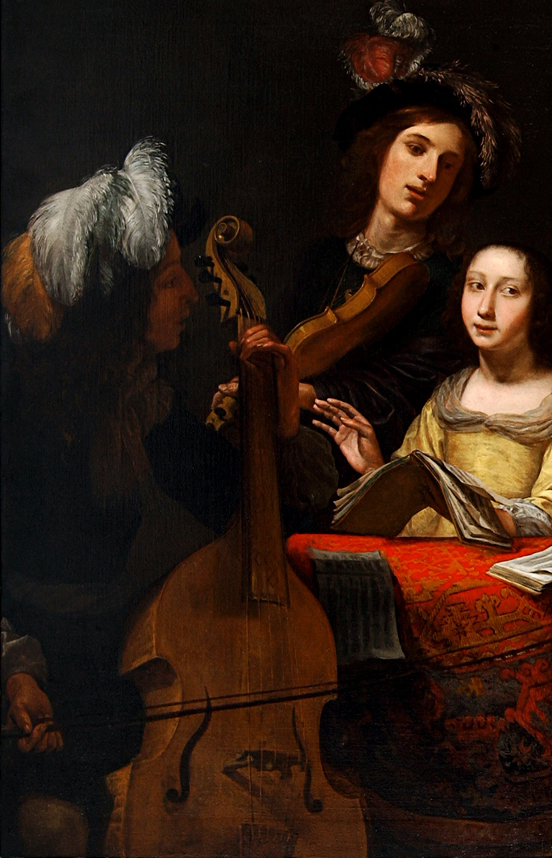The Viol or
The Viola da gamba FamilyThe string instruments of the collection belong principally to two important families, the viola da gamba family or viols and the viola da braccio family or violins. It is important to note that the two families - contrary to common opinion - are not related to each other: the viola da gamba is not at all a predecessor of the violin. Both families arose almost simultaneously and coexisted amicably for a period of three hundred years to produce some of the most wonderful music created by Western Culture.
The viola da gamba has commonly six strings, tuned in fourths with a third between the middle strings; however viols may have five or seven strings as well. There are seven frets on the fingerboard, similar to the lute or the guitar, from which it most likely evolved. Indeed a viol is basically a guitar modified so that one may play it with a bow. The Italian term, "da gamba", meaning "leg" refers to the playing position: between the player's legs.
One first encounters the viola da gamba in Spain, in the region around Valencia; the first paintings showing a true viola da gamba, dating from around 1480, may be seen in a church in Xátiva, near Valencia. Like all instruments of the Renaissance, the viola da gamba came in various sizes, corresponding to the different ranges of the human voice:
Treble viol - the soprano register
Tenor viol - the alto and tenor register
Bass viol - the baritone and bass register
Violone or Double bass - low bass register
The Viola di Pardone or Baryton may be considered to be a special case of the viola da gamba, as will be seen later.
The aristocratic viola da gamba went into disuse by 1800, but was revived around 1890 by pioneers like Christian Döbereiner, Arnold Dolmetch, Paul Grümer, later August Wenzinger, who helped it regain its place in concert life today.
